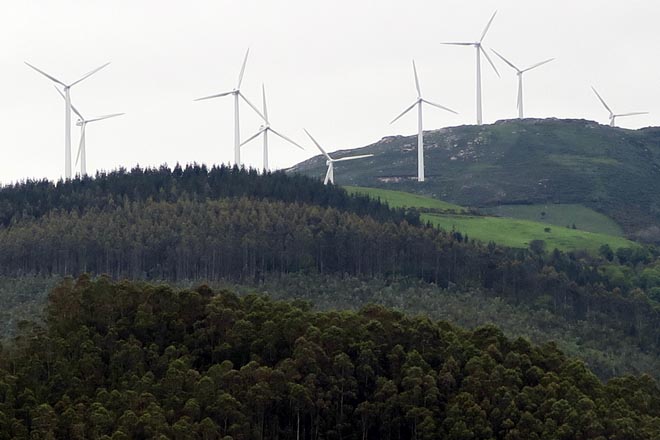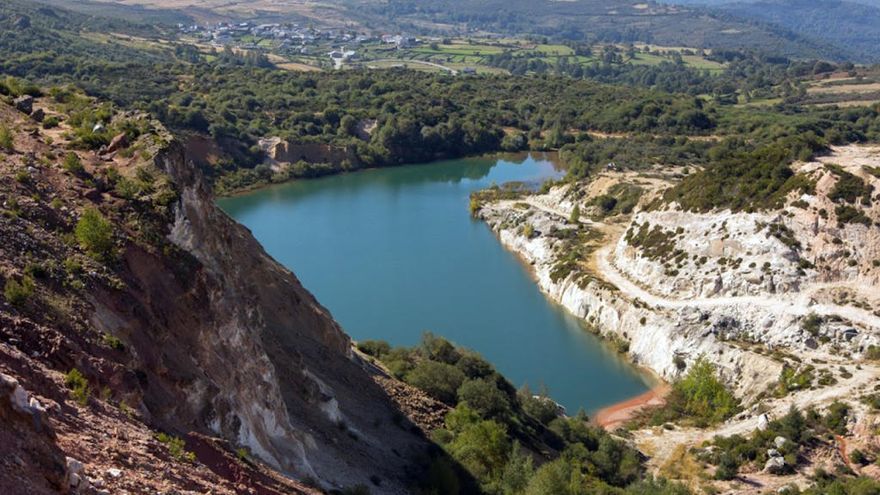Climate change is one of the causes that contribute to the increase in forest fires around the world, which in Galicia are already frequent every year. But it is not the only one, in Galicia the main cause of fires is the abandonment of rural areas.
Throughout history there have been periods of drought with an increase in the number of fires, but they were not so frequent, since rural areas were more worked and the conservation of forests was essential for forestry.
Currently, one of the biggest problems in Galicia, as well as in northern Portugal, is that the decline in forest use for agricultural consumption has led to a sharp increase in eucalyptus monoculture, which has expanded not only in the forest, but also near houses and roads, in areas where there were previously meadows and fields of crops.
Eucalyptus is the fastest growing and most profitable species for the wood and paper industry. But it is also an invasive species, pyrophyte and a great consumer of water resources. It is not endemic and alters the typical Galician landscape, transforming the fauna and flora that appear in the eucalyptus forests, and often hiding areas of historical heritage such as forts and megalithic remains.
In countries with a geography similar to Galicia, such as Ireland or Brittany, there is not so much eucalyptus surface because its uses are mainly dedicated to agriculture and livestock. It is also true that in Galicia there are more mountainous areas, so if the cultivation of eucalyptus is regulated, the forest will have to find other uses that prevent its abandonment.
Communal lands, land consolidation and the Land Bank are forms of territorial management that help reduce abandonment and increase the profitability of properties. It is important to prevent eucalyptus trees from growing near population centres and to require adequate clearing of the mountains after felling. In Galicia there are some areas of eucalyptus forest, especially in the Mariña de Lugo, which do not burn because they are not abandoned and do not expand in an uncontrolled manner.
On the other hand, there is a large burnt area that is not eucalyptus, but scrubland, mainly in the regions of Ourense. Some are even areas close to protected areas of environmental interest, which means that in addition to the most favourable climatic causes for the spread of fires, forestry and energetic interests also come into play for the reclassification of the land.
For this, in addition to preventive management, territorial and forestry planning is essential. Control of invasive species, to avoid excess pyrophytes, and allow compatibility of uses, establishing areas of forestry and agricultural use, areas of protected environmental use and also sustainable tourism in mountain areas.

(photo: campogalego.es)
Threats and opportunities of wind energy and mining.
If we want to make the most of this vast mountainous area of Galicia, a key use is wind energy. The European Union’s commitment to the energy transition, replacing fossil fuels with renewable energy, translates into the closure and reconversion of the As Pontes thermal power station.
But wind farms must be installed in suitable areas without interfering with the quality of life of the population. Excessive wind installations in areas close to rural areas cause damage to neighbours, birds, etc., in addition to the impact on the landscape, especially in coastal areas.
And wind energy should also have an impact on the territory itself. It makes no sense to discourage the population if the installation of wind turbines does not have an impact on the electricity bill, increasing depopulation. Galicia, as a renewable energy producing country, must take advantage of lower prices and avoid an excess of wind farms to export energy that is not needed, only for the benefit of large energy companies with tax headquarters abroad.
It is about having energy sovereignty within the Iberian electrical system, which must share the electrical grid in a balanced way with other renewable energies that must also be promoted, such as solar, within the framework of the 2030 Agenda, in the appropriate areas by carrying out climate studies.
And at the same time, the connection with international gas pipelines and gasification plants (there is one in Galicia, Mugardos) or with active nuclear power plants in other areas of the Iberian Peninsula to complement the energy demand without overexploiting the territory. Let us remember the experience of the excess of dams and hydroelectric plants in Galicia and the damage they caused to the population, who had to abandon towns and fields, and the consequences for the landscape of the river valleys that still have repercussions today.
Another activity related to rural abandonment is mining, which can be a threat, but also an opportunity. On the one hand, the Touro-O Pino Copper Mine project was fortunately interrupted thanks to protests from the population, as it was totally harmful to the towns and the environment.
However, the mountainous areas of the province of Ourense have mining resources that provide work for municipalities with high unemployment and rural abandonment, as minerals such as lithium or coltan are in high demand for the manufacture of technological products such as batteries for mobile phones or electric cars. Once again, it is necessary to study the advantages and disadvantages for the purpose of keeping the population in rural areas and improving their quality of life.
It is essential to reconcile uses through sustainable economic development with the least possible environmental impact. But above all, we must transfer the benefits to the region, creating an industry linked to mining in Galicia so that not only our raw materials are exported, but also this technology is manufactured in the country itself.

(photo: farodevigo.es)
Smart villages: agro-industry, local trade and rural tourism.
The latest social trends, especially after the pandemic, are the desire to move to rural areas, to improve the quality of life away from big cities. But the type of life that people want to have in rural areas is still urban, with cultural and leisure options, internet access and teleworking. Always valuing the environment and proximity to rural products, both food and artisanal.
Thus, on the one hand, there are young people who want to work in the countryside, but others want to be able to live there and have the option of commuting to work every day in the town or city. In both cases, it is necessary to promote employment and basic services in rural areas, as well as improve communications and public transport with the regional capitals, which are small commercial and service centres.
Food sovereignty and the modernisation of local agro-industry is one of the great opportunities. Galicia has a large area of diversified agricultural production that can be transformed in its own territory through a local industry, following the example of other countries of the European Union with similar geographical characteristics, such as Holland, Ireland, Brittany, France, the Basque Country, etc., which have an important agro-industrial sector.
The idea is to produce locally while being globally connected. In this sense, the villages must be close to training and professionalization centers in rural activities to increase innovation. They must also have agricultural cooperatives and rural markets that facilitate direct distribution from the producer to the consumer, as well as distribution channels to the cities.
The future lies in transforming traditional villages into smart villages through access to technology and the Internet, something essential to retain the rural population. On the other hand, there is a wide range of rural, natural, cultural and thermal tourism. The enhancement of historical and natural heritage is another of Galicia’s great assets.
And if we talk about local development strategies, we must take the example of Allariz, a county seat that offers different cultural, gastronomic and leisure activities every weekend of the year. This inland town benefits from its good geographical location, about 15 minutes from Ourense by motorway, and also from the Galician Technology Park, which offers the possibility of transforming it into a dormitory town. In addition, its endogenous economic activity is based on commerce, with an emphasis on clothing outlet stores, mainly of Galician brands.




